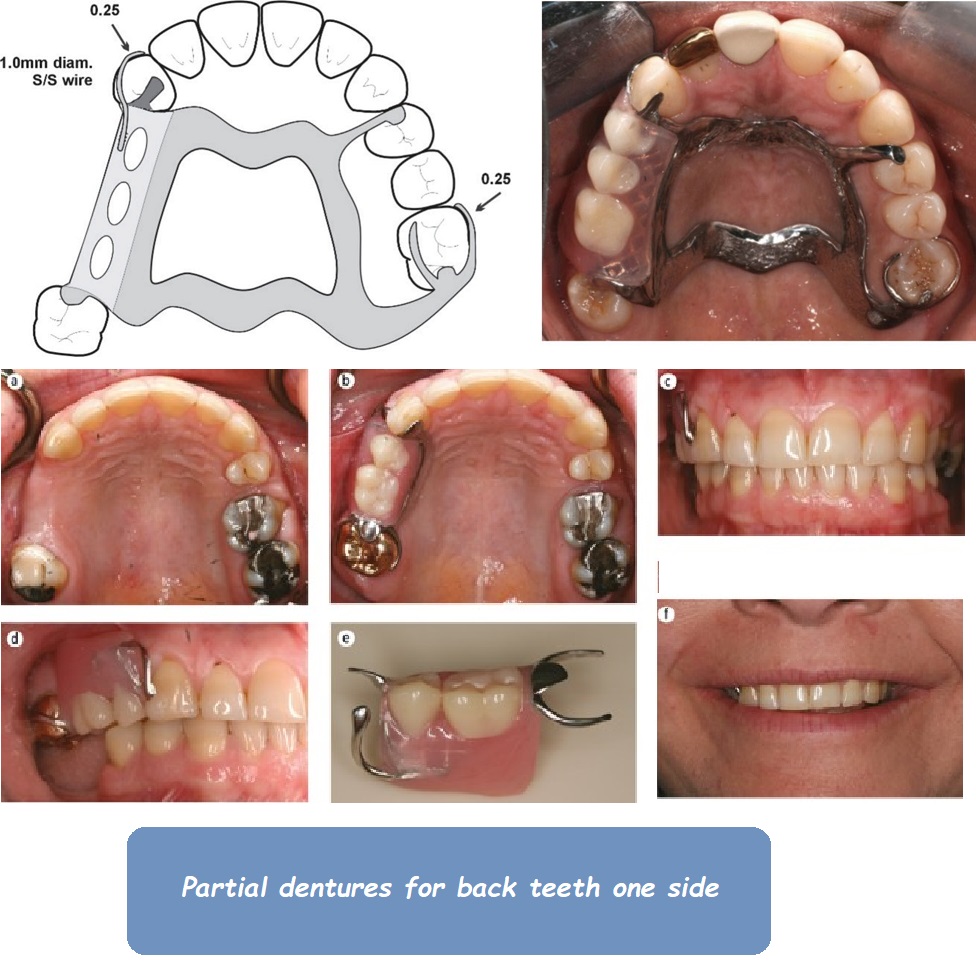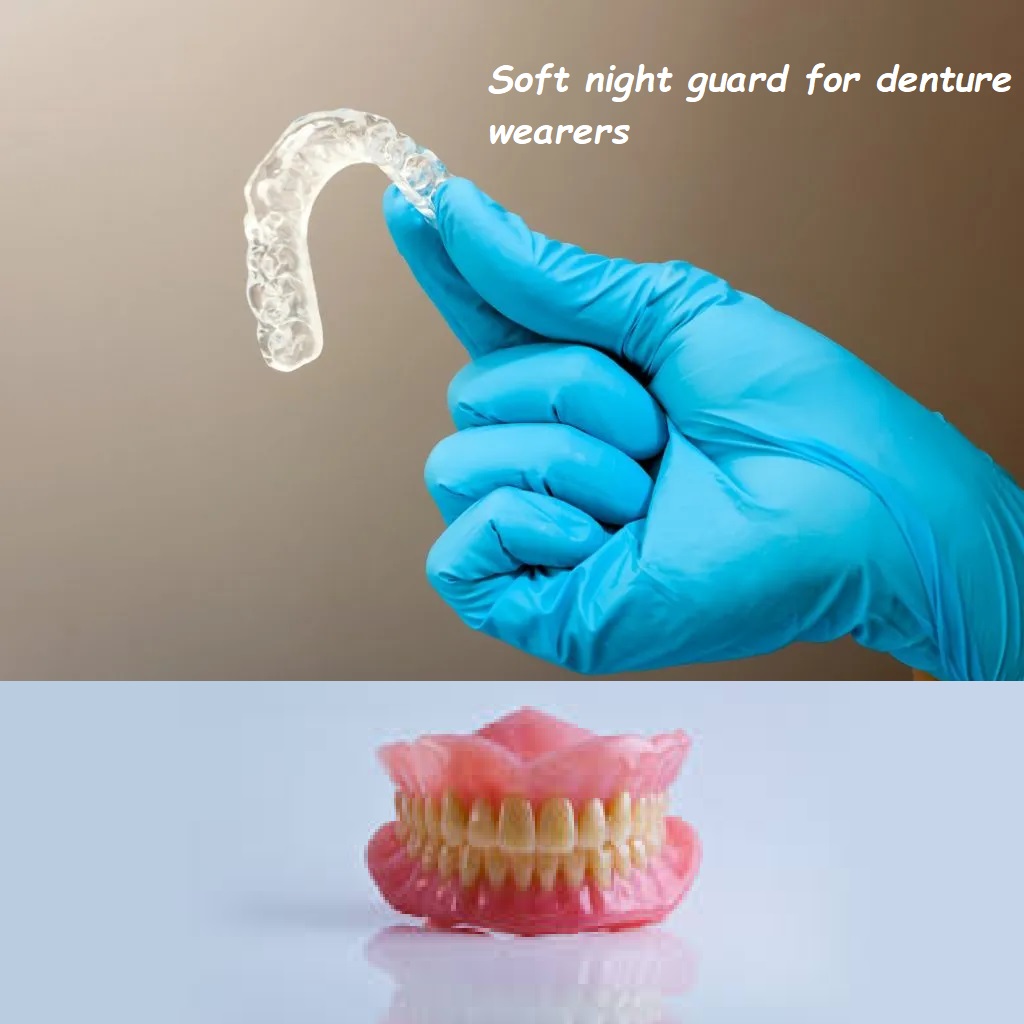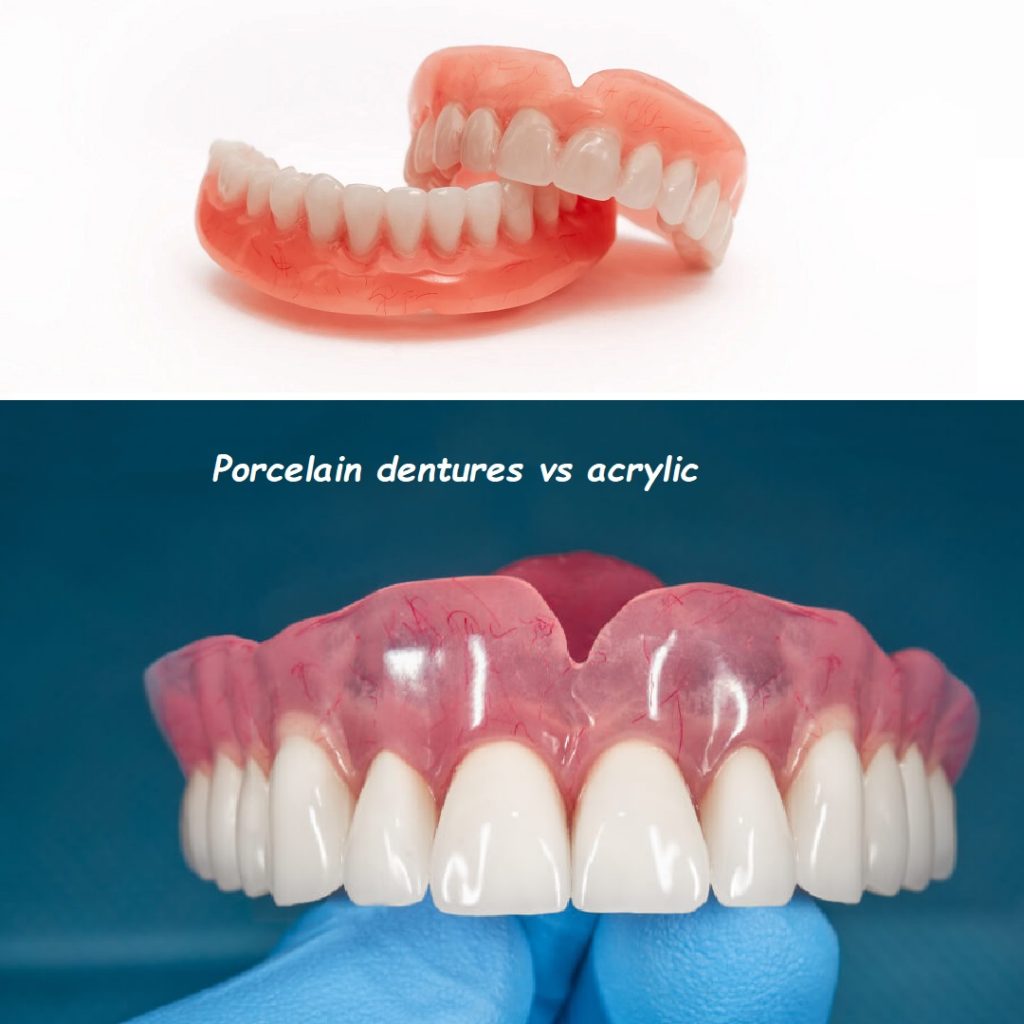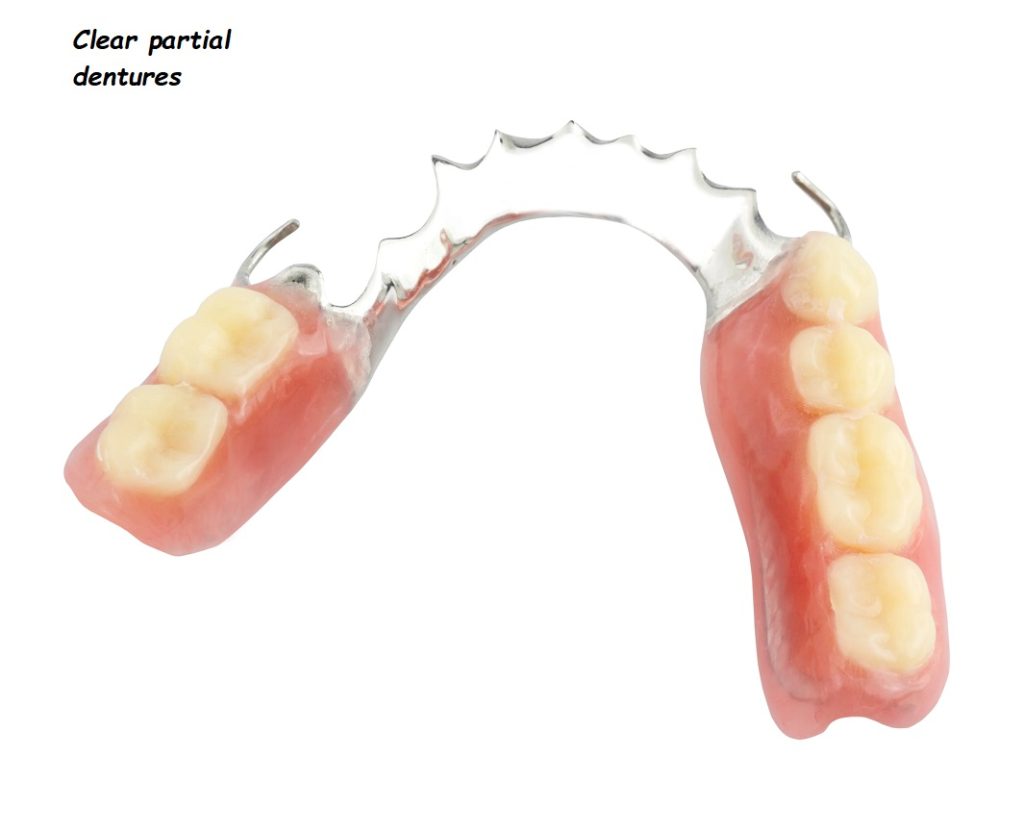Partial dentures for back teeth one side

Partial Dentures for Back Teeth on One Side: A Comprehensive Guide
Losing a tooth or multiple teeth, particularly in the back of your mouth, can be a challenging experience. Not only does it affect your ability to chew and speak, but it can also impact your overall oral health and confidence. Fortunately, there’s a solution that can restore both function and aesthetics—partial dentures for back teeth on one side. Whether you’re a dental professional, a patient considering partial dentures, or simply someone interested in dental care, this guide will provide you with a thorough understanding of partial dentures for back teeth on one side.
What Are Partial Dentures for Back Teeth on One Side?
Partial dentures for back teeth on one side, also known as unilateral partial dentures, are removable dental appliances designed to replace missing teeth on just one side of the mouth. Unlike full dentures, which replace all the teeth in an arch, partial dentures are used when some natural teeth remain. In this case, they are specifically designed to replace missing molars and premolars on one side of the mouth, helping to restore function and appearance.
These partial dentures are typically made of a combination of materials, including a metal framework and acrylic or resin teeth, designed to blend in with your natural teeth. The metal framework provides strength and stability, while the acrylic or resin base mimics the appearance of natural gum tissue, making the denture both functional and aesthetically pleasing.
Why Are Partial Dentures for Back Teeth on One Side Important?
Partial dentures for back teeth on one side play a crucial role in maintaining oral health and functionality. Here are some key reasons why these dentures are important:
- Restoring Chewing Function: Missing back teeth can significantly impair your ability to chew food properly. Partial dentures for back teeth on one side help restore your ability to chew, ensuring that you can enjoy a varied diet and maintain proper nutrition.
- Preventing Shifting of Teeth: When a tooth is lost, the surrounding teeth can begin to shift into the empty space, leading to misalignment and bite issues. Partial dentures help fill the gap, preventing adjacent teeth from moving out of position.
- Improving Speech: Missing teeth, especially in the back, can affect your speech by causing you to lisp or slur certain words. Partial dentures provide the necessary support to help you speak more clearly.
- Enhancing Aesthetics: Even though back teeth aren’t as visible as front teeth, missing them can still affect the appearance of your smile and facial structure. Partial dentures help maintain the natural contours of your face, preventing a sunken appearance.
- Boosting Confidence: Missing teeth can affect your self-esteem, making you hesitant to smile or speak freely. Partial dentures can restore your confidence by providing a natural-looking solution to tooth loss.
Types of Partial Dentures for Back Teeth on One Side
There are several types of partial dentures that can be used to replace back teeth on one side of the mouth. Each type has its own set of advantages and considerations, depending on the patient’s needs and preferences. Here’s a look at the most common types:
- Acrylic Partial Dentures: These are often referred to as “flippers” and are made primarily from acrylic resin. They are lightweight, cost-effective, and easy to adjust. However, they may not be as durable as other types of partial dentures and are typically used as a temporary solution.
- Metal Framework Partial Dentures: These dentures feature a metal framework made from materials like cobalt-chrome, providing a sturdy and durable foundation. The metal framework is often combined with acrylic or resin to create a natural-looking gum line. Metal framework partial dentures are more durable and provide better stability compared to acrylic options.
- Flexible Partial Dentures: Made from a flexible nylon material, these dentures are known for their comfort and natural appearance. The flexibility allows them to adapt to the contours of your mouth more easily, making them less likely to cause sore spots or discomfort. They are also more aesthetically pleasing, as they don’t require visible metal clasps.
- Valplast Partial Dentures: Valplast is a type of flexible partial denture that is lightweight and comfortable. It’s known for its natural appearance and the ability to blend seamlessly with the gums. Valplast dentures are particularly beneficial for patients who have allergies to certain metals.
- Cast Metal Partial Dentures: These are the most durable type of partial denture, featuring a metal base that is cast to fit precisely over the remaining teeth and gums. Cast metal dentures are long-lasting and provide excellent support and stability, making them a popular choice for long-term use.
The Process of Getting Partial Dentures for Back Teeth on One Side
Obtaining partial dentures for back teeth on one side involves several steps to ensure a proper fit and function. Here’s an overview of the process:
- Initial Consultation: The process begins with a consultation with your dentist. During this visit, the dentist will examine your mouth, take X-rays if necessary, and discuss your options for partial dentures. This is also the time to discuss your goals, preferences, and any concerns you may have.
- Impressions and Measurements: If you decide to proceed with partial dentures, the dentist will take impressions of your mouth. These impressions are used to create a model of your teeth and gums, which serves as the basis for designing your partial denture.
- Denture Design: Based on the impressions and measurements, the dentist will work with a dental laboratory to design your partial denture. This includes selecting the appropriate materials, determining the placement of artificial teeth, and deciding on the type of clasps or connectors that will be used.
- Fitting the Denture: Once the partial denture is fabricated, you’ll return to the dentist for a fitting. The dentist will place the denture in your mouth, make any necessary adjustments, and ensure that it fits comfortably and functions properly.
- Follow-Up Appointments: After the initial fitting, you may need to return for follow-up appointments to make further adjustments. This is important to ensure that the denture remains comfortable and secure as you begin to wear it regularly.
Advantages of Partial Dentures for Back Teeth on One Side
Partial dentures for back teeth on one side offer numerous advantages, making them a popular option for many patients. Here’s a closer look at the benefits:
- Preservation of Remaining Teeth: By replacing missing teeth with a partial denture, you help preserve the alignment and health of your remaining natural teeth. This prevents them from shifting and reduces the risk of further tooth loss.
- Non-Invasive Solution: Unlike dental implants, which require surgery, partial dentures are a non-invasive option for replacing missing teeth. This makes them suitable for patients who may not be candidates for surgery due to health concerns.
- Cost-Effective: Partial dentures are generally more affordable than other tooth replacement options, such as implants or fixed bridges. This makes them accessible to a broader range of patients.
- Customizable Fit: Partial dentures are custom-made to fit the unique contours of your mouth, ensuring a comfortable and secure fit. This customization helps prevent sore spots and discomfort that can occur with ill-fitting dentures.
- Ease of Maintenance: Partial dentures are relatively easy to care for. They can be removed for cleaning, which helps maintain oral hygiene and prolongs the life of the denture.
- Improved Quality of Life: By restoring your ability to chew, speak, and smile confidently, partial dentures can significantly improve your overall quality of life. They allow you to enjoy your favorite foods, engage in conversations, and smile without hesitation.
Disadvantages and Considerations
While partial dentures for back teeth on one side offer many benefits, there are some disadvantages and considerations to keep in mind:
- Adjustment Period: It may take some time to get used to wearing a partial denture, especially if you’ve never worn one before. During the adjustment period, you may experience minor discomfort, changes in speech, or increased saliva production.
- Maintenance: Partial dentures require regular cleaning and care to keep them in good condition. Failing to maintain them properly can lead to issues such as staining, bad breath, or gum irritation.
- Durability: While partial dentures are durable, they are not as long-lasting as dental implants. Over time, they may need to be adjusted, relined, or replaced due to wear and tear or changes in the shape of your gums.
- Stability: Depending on the type of partial denture you choose, stability can be an issue. For example, flexible partial dentures may not provide the same level of stability as a metal framework denture, leading to a less secure fit.
- Visible Clasps: Some types of partial dentures use metal clasps to secure the denture in place. While these clasps are effective, they can be visible when you smile or speak, which may be a concern for some patients.
How to Care for Your Partial Dentures for Back Teeth on One Side
Proper care and maintenance of your partial dentures are essential to ensure their longevity and effectiveness. Here are some tips on how to care for your partial dentures:
- Daily Cleaning: Clean your partial dentures daily using a soft-bristled toothbrush and a non-abrasive denture cleaner. Avoid using regular toothpaste, as it can be too abrasive and cause scratches.
- Soak Overnight: Remove your dentures at night and soak them in a denture cleaning solution or plain water. This helps to keep them clean and prevents them from drying out.
- Handle with Care: When cleaning your dentures, handle them over a soft surface or a basin filled with water to prevent damage if they’re accidentally dropped.
- Regular Dental Visits: Schedule regular visits with your dentist to ensure that your partial dentures continue to fit properly and to address any issues that may arise.
- Avoid Certain Foods: Hard and sticky foods can damage your dentures or cause them to dislodge. Try to avoid these types of foods or cut them into smaller pieces before eating.
- Stay Hydrated: Keeping your mouth moist is important for denture wearers. Drink plenty of water throughout the day to help prevent dry mouth, which can affect the fit and comfort of your dentures.
Alternatives to Partial Dentures for Back Teeth on One Side
While partial dentures for back teeth on one side are a popular and effective option, there are other alternatives available for replacing missing teeth. Here are some options to consider:
- Dental Implants: Dental implants are a permanent solution for replacing missing teeth. They involve surgically placing a titanium post into the jawbone, which acts as a replacement tooth root. A crown is then attached to the post, providing a natural-looking and durable tooth replacement. Implants offer superior stability and function but require surgery and a higher upfront cost.
- Fixed Bridges: A fixed bridge involves placing crowns on the adjacent teeth and attaching a prosthetic tooth (or teeth) to them. This option is more permanent than removable dentures but requires altering the natural teeth. Fixed bridges provide a stable and long-lasting solution for missing teeth.
- Removable Partial Dentures: Similar to partial dentures for back teeth on one side, removable partial dentures can replace missing teeth on both sides of the mouth. They are custom-made to fit your mouth and can be removed for cleaning. This option is more versatile but may require more maintenance.
- Flexible Partial Dentures: As mentioned earlier, flexible partial dentures are made from a flexible nylon material that conforms to the shape of your gums. They are comfortable and aesthetically pleasing but may not provide the same level of stability as other options.
Frequently Asked Questions About Partial Dentures for Back Teeth on One Side
1. How long do partial dentures for back teeth on one side last?
With proper care, partial dentures can last anywhere from 5 to 10 years. Over time, however, adjustments may be needed as the shape of your gums and jawbone changes.
2. Can I eat normally with partial dentures for back teeth on one side?
Yes, partial dentures are designed to restore your ability to chew and eat a wide range of foods. However, you may need to avoid very hard or sticky foods that could damage the dentures or cause them to dislodge.
3. How much do partial dentures for back teeth on one side cost?
The cost of partial dentures can vary depending on the materials used, the complexity of the design, and the dentist’s fees. On average, you can expect to pay between $600 and $1,500 for a partial denture.
4. Will my speech be affected by wearing partial dentures for back teeth on one side?
You may experience some changes in your speech initially as you adjust to the partial denture. However, most patients find that their speech returns to normal once they become accustomed to wearing the denture.
5. How do I know if my partial dentures fit properly?
A properly fitting partial denture should feel secure in your mouth without causing pain or discomfort. If you experience sore spots, slipping, or difficulty chewing, it may be a sign that your denture needs adjustment.
Conclusion: Are Partial Dentures for Back Teeth on One Side Right for You?
Partial dentures for back teeth on one side offer a practical, cost-effective solution for restoring your smile and maintaining your oral health. Whether you’re missing one tooth or several, these dentures can provide the support and function you need to enjoy your favorite foods, speak clearly, and smile with confidence.
Choosing partial dentures is a personal decision that depends on your individual needs, preferences, and budget. By understanding the benefits, potential drawbacks, and care requirements, you can make an informed choice that suits your lifestyle.
If you’re considering partial dentures for back teeth on one side, consult with your dentist to discuss your options and determine the best solution for your dental health. With the right care and attention, your partial denture can provide you with years of comfortable and confident use.
So, are partial dentures for back teeth on one side the right choice for you? Take the time to explore your options, weigh the pros and cons, and talk to your dentist. Your journey to a healthier, happier smile starts with making the right decision for your unique needs.









